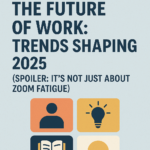Imagine your entire job is to create pictures of things that can’t be seen. That sums up the career of Cameron Slayden, animator and founder of Microverse Studios. His has been a fascinating journey; starting as a scientific illustrator for Science magazine, Slayden quickly discovered his passion for animation and has since built a successful career in the industry.
Slayden’s affinity for science and art began at a young age. In high school, he discovered a passion for the art of scientific illustration, and he pursued it through college, earning an interdisciplinary degree in art and biology. After graduation, he landed a job as a science illustrator for the revered journal Science Magazine, where on a daily basis he illustrated concepts ranging from molecular interactions to geology to the big bang. There, Cameron honed his skills in creating illustrations that were not only visually stunning, but also accurately depicted real science on the cutting edge of discovery. He quickly gained a reputation in both scientific and illustration communities for producing high-quality work that was both informative and engaging.
While the work was fulfilling, Slayden knew he had hit the limit of his artistic growth without further study. He and his wife, Olivia, decided to leave it all behind and move to Augusta, Georgia, where he enrolled in a graduate program for medical illustration. It was there that he found himself increasingly drawn to the world of animation. He began experimenting with different animation techniques and software, and by the time he graduated in 2005, Cameron and Olivia decided to found their own scientific animation company: Microverse Studios.
The studio quickly established itself as a leader in the animation industry, producing animation for TV series on History, National Geographic, and the Food Network. This work helped Microverse Studios develop its own optimized production process independent of the typical pipeline workflows of other production companies.
But that wasn’t enough. Cameron wanted to create animations about real science at the bleeding edge of discovery. He and Olivia began to reach out to biotech companies. In short order, Microverse Studios transitioned away from TV to animation for biotech and pharma companies full time.
A commitment to innovation and a passion for storytelling has characterized Slayden’s work at Microverse Studios. The studio’s animated films are known for their stunning visuals and engaging narratives and have earned numerous film awards and critical acclaim from audiences.
One of the most exciting things about Microverse Studios is the studio’s commitment to elevate the industry of scientific animation. The studio is constantly experimenting with new technologies and is always looking for ways to push the medium forward. Their blog is home to an ever-growing library of tutorials designed to help new scientific animators develop life-science-specific animation skills, and Cameron is an Assistant Clinical Professor of Biomedical Animation at the University of Illinois at Chicago.
“Every advance in life sciences and artificial intelligence increases the rate of discovery. That means there will be a lot of stories to tell. We’re going to need every scientific animator we can get in the coming years,” says Cameron.
Despite his success, Slayden remains humble and dedicated to his craft. As creative director and one of the animators at Microverse Studios, he works tirelessly to create the best-animated content possible, and his passion for learning and spreading knowledge is evident in everything he does.
Cameron Slayden’s passion for animation and dedication to his craft has made him one of the most respected animators in the industry. Microverse Studios has developed a reputation as one of the top scientific animation firms in the world. With his commitment to innovation and storytelling, there’s no doubt that Slayden will continue to build upon his legacy of raising the bar for the scientific animation industry for many years to come.












